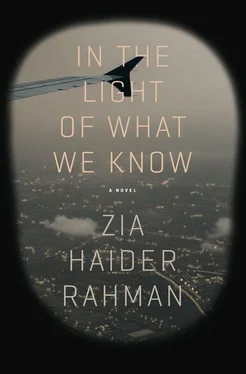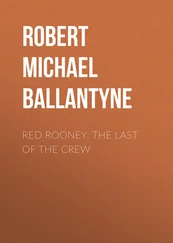We choose markings for numbers, on a screen or a page, continued Zafar, because we need something we can contain in our perception. The base is not relevant to the nature of the numbers but is relevant to us only because it gives us icons for numbers.* We need icons even if they hide the truth of the number— because they hide the truth of the number. That truth would exceed our intelligence. If I ask you to think of an elephant — in fact, let’s run an experiment. Think of an elephant. What do you see? What do you have in your head?
An elephant. I have an elephant in my head, I replied.
Now think of the number fifteen.
He paused, then: What are you thinking of?
The number fifteen.
Wrong. You have the image in your head of the numerals one and five, of fifteen, don’t you?
True.
That’s not the number fifteen but a representation of it.
But isn’t every word just a representation of the thing itself?
Yes, but I’m not asking you to think of the words; I’m asking you to think of things — an elephant and the number fifteen. And when you thought of fifteen, one-five, you didn’t think of the number — you thought of a representation of it. In other words, you think of something that requires you to invoke an entirely separate code in order to break its mystery — in this case the code is base ten. Again, you thought of a one followed by a five. That makes sense only as a representation of the number fifteen and only if you have a base ten. But where’s the code in the picture of an elephant? None. You were thinking of one particular elephant, the elephant in your head. But for the number fifteen, you had to settle for the numerals one and five. It’s as if numbers are saying: In order to see me at all, in order even to meet some visage of me, you have to make a choice.
And what’s this got to do with the price of oranges? I asked. I was irritated.
The whole thing is too abstract, continued Zafar, this business of our lives standing for something else. All we know is that we don’t want it to stand for nothing. So we dive headlong into becoming heroes, becoming the big swinging dick on Wall Street or the rock star or the hot-shot human rights lawyer. Which is about making our lives stand for something that our intelligence can grasp, saving us from confronting what we fear might be true — or what we would fear if we gave ourselves the chance — namely, that we’re accidental pieces of flesh, mutton without meaning.
You’re losing your job, your career, and something’s going on between you and Meena. You must be losing that sense of control you always had, or thought you had.
Very profound. I’m feeling much better already, thanks. But you’re right. It’s too abstract. I want to go back to the story you were telling. Tell me about Bangladesh, about those years you were there as a boy. Please.
Zafar took a sip of champagne before continuing with the story. He could never be hurried — at least not by me.
* * *
Bangladesh, or Bangla-desh, he said, means Bengali-land. The nation borders the Indian state of West Bengal, whose people also speak Bengali, who are also Bengali. And yet there is no state of East Bengal. Indeed, the national anthems of both India and Bangladesh were written by one Bengali, the poet Rabindranath Tagore, who, as Bengalis never tire of reminding Westerners, won the Nobel Prize for literature in 1913. Bengali-ness, then, is not a feature that singles out Bangladesh.
If you were to search for anything distinctive about Bangladesh, you would not have to look far, for the place is covered in water, its surface fully one-third aquatic during the rains. Imagine that! Every third step you take is a watery one. The land is a vast confluence of rivers, the silty, sodden soil where the deltas of three great rivers of the world interlace. And if this were not enough water, every year the monsoon rushes in from the Indian Ocean and tips the sky over the whole country, swelling the rivers until brimful they snap like a whip and gouge out new routes around hills and through the earth.
Land of Three Rivers might have been more distinctive as a name for the country, a name richer with meaning. These are no ordinary rivers. They are not settled. Their courses are ever shifting, their tributaries twist and turn like the tail of a dragon in ecstasy, sweeping over the bank and into the makeshift homes of fishermen and their families. The Brahmaputra starts out north of the Himalayas, in China, curling itself around the eastern edge of the mountain range, through Tibet, before bursting upon Bangladesh, where its name changes to Jamuna.
The holy Ganges begins in the Gangotri Glacier in the central Himalayas and carves out a route across the north Indian plains and into Bangladesh, where it divides into many branches and where the locals give it other names, many names, as if the changes of name will bring the rivers home.
The third river, the most Bengali of all, goes through several names before uncoiling into the Indian Ocean. The Barak gathers itself from the corners of the northeastern Indian states, from Assam, Manipur, and Mizoram, and as it enters Bangladesh it divides in two to become the Surma and Kushiyara. These two rivers are reunited farther downstream, after receiving tributes from legions of lesser ones, to form the mighty Meghna, a beast of a river.
I was on a train moving over a network of bridges and railways superimposed upon this vast lattice of rivers and tributaries. We crossed many bridges. Most creaked painfully as the train slowly ground over them before picking up speed on reaching the other side. As we crossed one bridge, I peered below and saw the rusted carcass of a train carriage jutting out of the brown river, as if pointing a crooked finger toward the offending bridge.
Sometimes, the train came to a stop to wait for the tracks to be cleared of livestock. The herdsmen made no haste in moving their cattle, and the train driver sometimes climbed off and walked the length of the carriages, inspecting the chassis of the train, as if it needed monitoring. Once or twice, he and a herdsman shared a biri, a local cigarette.
Sometimes the train would slow to a crawl before entering a sharp bend, where it would tilt precariously into the curve so that you could see the iron rails on the sleepers directly below the window. It seemed that at these sharp bends the outer track had been laid higher than the inner track, and I wondered if it would be safer if the train were to speed around these bends rather than slow down. Indeed, it seemed to me that the engineers (of the Victorian era, though I would not have known that then) must have had it in mind that trains would come into the bend at great speed and had accordingly laid the outer rail higher than the inner. At sufficient speed, the force of being thrown outward by the centrifuge of turning a bend would equal the force of being drawn downward because of the tilt from the uneven rails, thereby resulting in a smooth ride, as on the high-speed trains throughout continental Europe today.
For an hour, I drew schematic diagrams in my little notebook of a carriage that would tilt inward, rather than outward, under the impulse of the centrifugal force as it came into a bend by means of holding the carriage in a brace that allowed it to roll, and weighting it along the bottom. At the time, I had no need for or knowledge of such words as I use now in describing what I did. But even as I drew my diagrams, whenever the train crawled into a bend, I would get up and take five steps to the other side of the carriage, on the off chance that my own weight might make the tiniest difference that could save the train from tilting over entirely.
I performed this righting maneuver twice before noticing another boy in the carriage doing the same. He seemed about my own age, though I now think he might have been a little older. The boy appeared to be traveling with his parents, both of whom looked elderly, thin, dark as night, their leather skin pulled onto their bones, giving the impression of bags stuffed with coat hangers. I could not tell if the boy was merely imitating me or if he had reached the same conclusion regarding the need to act as counterweight to the tilt of the train. His mother and father watched him, and when their eyes met mine they smiled at each other.
Читать дальше












